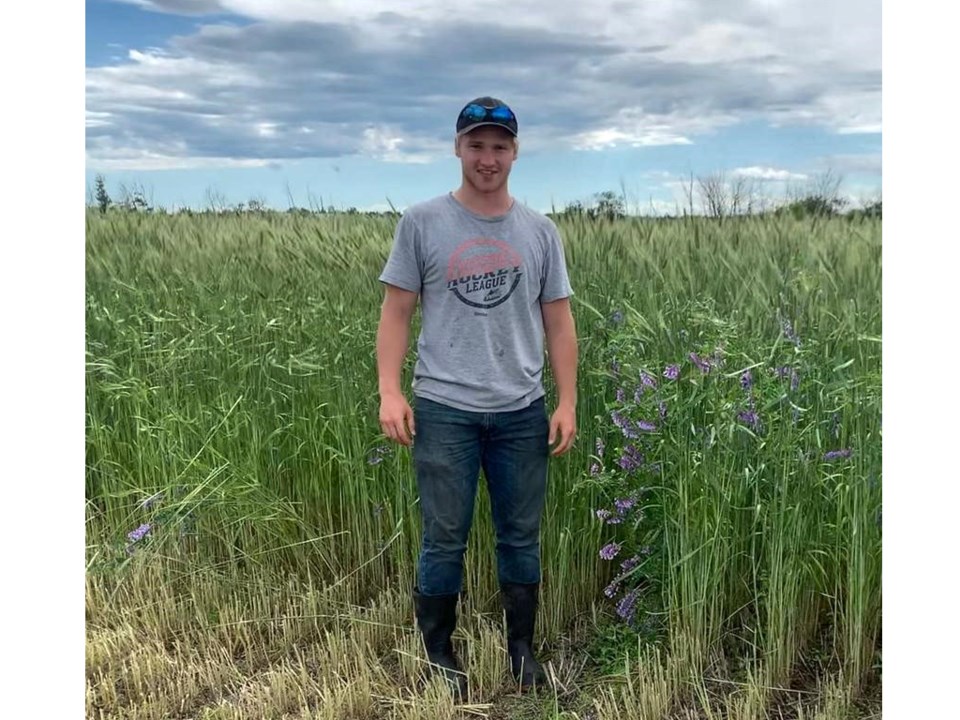When it comes to explaining how the addition of cover crops have impacted his family farm, Bray Rookes is full of positives as to how his farm has benefited. But the 20-year-old Western Manitoba farmer in the Assiniboine West Watershed District (AWWD) really gets excited when detailing how his family’s cover crop mixes handled the deluge of 2022 rain after a year of drought in 2021.
“When it rained heavily, our cover crop was the only field you could drive on with the massive increase of water infiltration rates. We grew 80 acres of hairy vetch, tillage radish and winter triticale on a poorly managed, degraded soil,” says Rookes of his family’s first-ever participation in Manitoba Forage and Grassland Association (MFGA)’s Soil Health Project, led by three Manitoba Watershed Districts, including AWWD, Central Assiniboine and Souris River and supported by the Conservation Trust, a Manitoba Climate and Green Plan Initiative delivered by the Manitoba Habitat Heritage Corporation.
“With the help of adequate rain, the crop came back in the spring and grew to a massive 36 inches tall and as of June 10 this year, weighed in at 15 tons/acre wet weight and averaged five tons dry weight across the field, with no synthetic fertilizer, and no in-crop spray passes at all! Amazing!”
Bray Rookes farms near Manson, MB with his parents Mike and Leanne Rookes. Rookes says this was his family’s first major jump into the cover cropping world and they couldn't have been more thrilled with the results.
“With a wet spring on our hands, we were like a lot of farmers and we were so late getting into the field which resulted in idle soil resting for a long time with plenty of heat units beaming down and not being used in photosynthetic activity,” says Rookes. “It actually hurts us now to see our fields idle and not capturing the power of a cover crop. And believe me, we have experienced every benefit of the cover crops and I just don’t have the time to talk about them all!”
According to Ryan Canart, AWWD general manager, programs like the MFGA Conservation Trust Project and the Prairie Watershed Climate Project are empowering watershed districts and ag groups like MFGA to engage more often and in more meaningful ways with farmers and producers on the soil health front.
These two programs are funded by the On Farm Climate Action Fund of Agriculture and Agri-Food Canada and led by Manitoba Association of Watersheds in Manitoba and Saskatchewan.
“Programs like this cover crop program that the Rookes [family] are enrolled in really help build healthy soils, which is one of the main things we can do to help buffer farm lands against volatile weather patterns, such as the crush of rain in our Watershed District in 2022 and the impacts of drought on those same lands in 2021", said Canart. "Healthy soils really help on that extreme weather front, as Bray will happily tell you.”
Rookes nods to the leadership and collaboration of the AWWD and says projects such as those offered via groups such as MFGA through excellent funding partners such as the Conservation Trust allow young farmers the opportunity to improve their soil to be more profitable and resilient on their farms.
“Every citizen can be proud to see the progress our local agriculture has been making at massive goals such as climate change, watershed function, soil and human health,” says Rookes. “This is an opportunity to speak on the successes of the watershed and agriculture. I would like to get this story out to the people that support farmers and the watershed. They deserve to hear the progress they have helped accomplish.”




